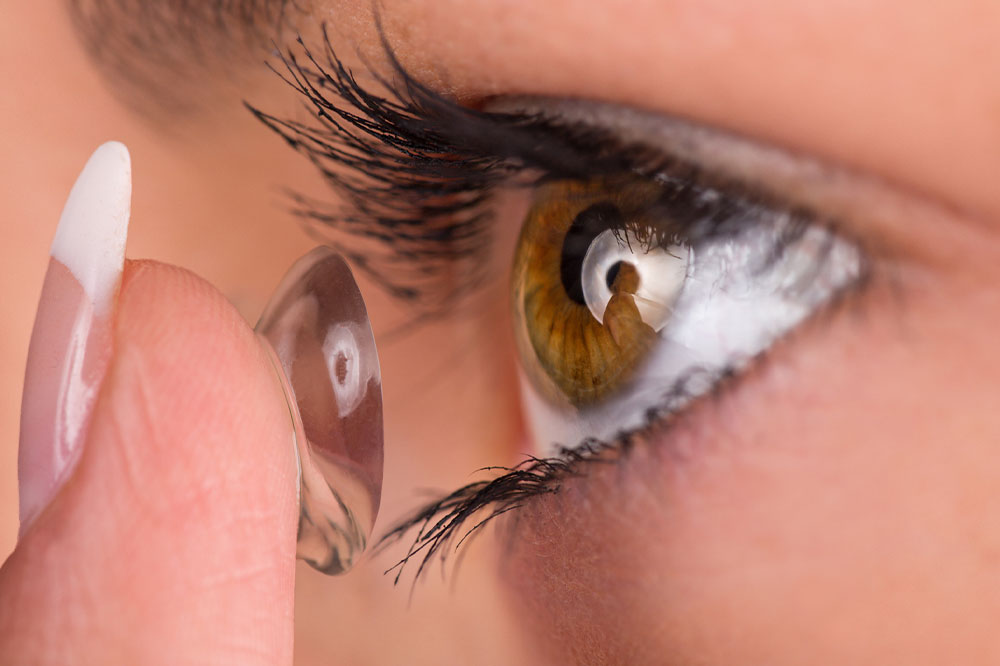
A brief guide to buying contact lenses
Contact lenses are most often worn as an alternative to glasses. In some cases, contact lenses may be worn to help the eye heal after surgery or trauma, such as bandage lenses or therapeutic lenses. However, contact lenses might not be suitable for everyone; those that have dry eyes or inflammation of the cornea or eyelid should avoid wearing contact lenses. Let’s take a look at some essential things to know while buying contact lenses.
Types
Contact lenses can be made from different types of materials and could be classified as follows:
Hard lenses or rigid gas-permeable lenses
These are made from polymethyl methacrylate, a type of stiff plastic. They are cheaper than soft lenses. These are more long-lasting than soft lenses and allow more oxygen through to the cornea. These need to be cleaned and disinfected at night but can be worn for a week or 30 days.
Soft lenses
These are usually made of flexible plastic, such as silicone hydrogel or hydrogel. They are the most commonly prescribed contact lenses and can be used to correct vision problems such as blurred vision, farsightedness, nearsightedness, and age-related loss of vision. These are available in various types, such as daily wear lenses and overnight or extended wear lenses. Daily wear lenses can be worn only for a day. You can get two-week disposable and monthly disposable lenses too. These would need to be cleansed and disinfected every night. Overnight lenses, on the other hand, can be worn for up to 30 days continuously, even when sleeping. However, the risk of eye infections and other eye issues developing is high with this type of lenses.
Specialized contact lenses
These include multifocal lenses that are used to correct farsightedness, nearsightedness, and presbyopia, all at once. Tinted contact lenses such as color enhancement lenses help to enhance or intensify the natural eye color of the wearer, and opaque lenses change the natural eye color of the wearer. For example, if a person with green eyes chooses lenses with a brown tint, their eye color would appear brown. Scleral contact lenses can help those with an irregular or distorted cornea to see clearly.
Costs
The cost of contact lenses varies and is difficult to determine. There are various factors that need to be considered when determining the cost. These are:
- The material used, whether hard or soft
- The tints on the lenses
- If the lenses need to be customized to be suitable for a particular eye condition, for example, astigmatism
You can use your health savings account (HSA) or your flexible savings account (FSA) to pay for your contact lenses, as most health insurance providers do not cover vision costs.
Contact lenses – Tips to choose
Get the right fit
Visit your eye doctor for a thorough eye exam and fitting before you get contact lenses.
Avoid over-the-counter products
These can cause eye infections and injuries; if you are looking for decorative lenses, talk to your doctor.
Duration of wear
Soft lenses can be worn for a long time; however, they are not as durable as hard lenses. You also need to consider the frequency at which you would need to change your lenses. Daily disposable lenses cost more, but they have a lower risk of infection. Consult your optometrist for advice on the type of lenses you should get.
Buy from reputable sources
If you are buying contact lenses on the Internet, then buy from websites that offer known brands. Ensure that when you receive your order, the information on the lens box matches the prescription.
Contact lenses are safe to wear. However, without proper care, you can be susceptible to eye infections. Contact an eye doctor to know what type of lens would suit your visual needs best.




